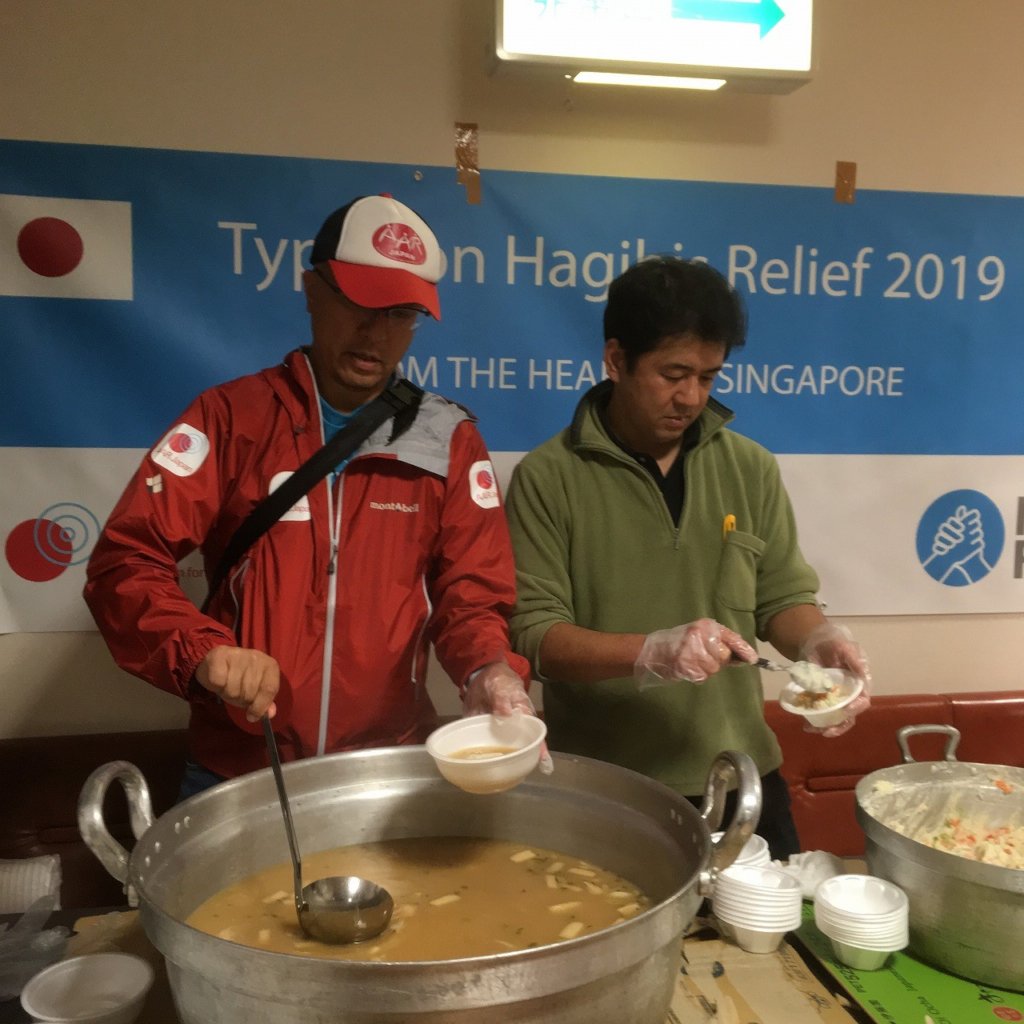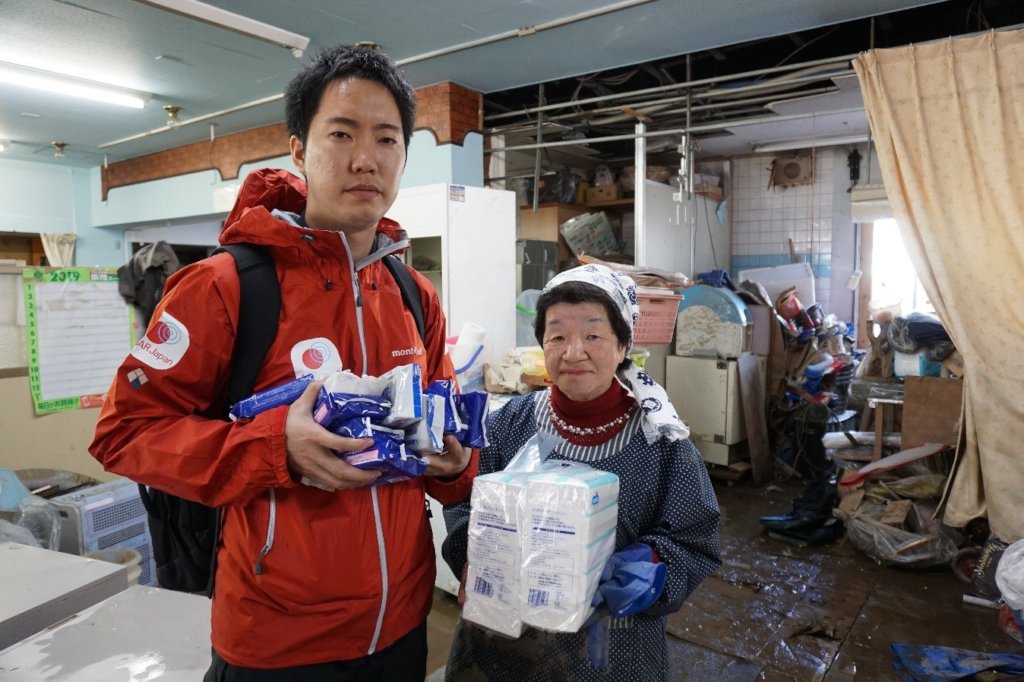By Takumi Takagi | Assistant manager for domestic emergency projects
The Headquarters for Major Disaster Management in the Cabinet Office of Japan reported that Typhoon Hagibis left 99 deaths in 13 prefectures and affected 390 towns and cities as of February 12th, 2020. AAR Japan has supported affected people in Miyagi, Fukushima, Nagano, and Tochigi prefectures since October 13th, 2019, by providing soup-kitchen services. In addition, AAR Japan has carried out needs-assessments in welfare facilities affected by the typhoon during distributions of relief items.
Soup kitchen activities
On October 13th, 2019, the next day Typhoon Hagibis made landfall in Japan, AAR Japan started soup kitchen activities in coordination with PEACE PROJECT, Japanese NGO founded after the 2011 Great East Japan Earthquake with missions to support vulnerable people, in Hoyasu district, Nagano prefecture. AAR Japan and PEACE PROJECT have so far held 17 soup kitchen sessions and provided 3,520 meals in Nagano, Miyagi, and Fukushima prefectures. The most recent session took place at the civilian hall in Marumori city, Miyagi prefecture, on February 15th, 2020.
The planned menus are traditional Japanese soup with fish, pork and Natto, and other side dishes as the local governments prepare boxed lunch for people staying at evacuation centers. Outside the centers, the menus change to curry rice, Gyu-don (a bowl of rice topped with beef), and other rice-included meals as main dishes because those staying home are not provided with boxed lunch. People are grateful for the meals as they were not able to cook themselves due in large part to water outage, which lasted almost three weeks after the disaster hit. Despite their plight and suffering, affected people living in the areas gave a hand to us for the soup kitchen activity.
Food and NFI (non-food items) distribution
Along with the soup kitchen activities, AAR Japan has distributed water and sanitary goods to 12 welfare facilities that run day care services for the elderly and people with disabilities (PWDs). These facilities were all flooded during the typhoon, with the water level reaching 78 inches from the ground level. Floods brought sludge inside the facilities, leaving the sanitary condition deteriorated. The facility staff members needed to ask the facility users to work together on cleaning the inside up because the staff members were overwhelmed simply because of the endless work and needed a hand. To make things worse, they were running out of sanitary goods, which were not readily available in the areas due to the high demands for the items and damaged logistics infrastructure. Facility staff members were delighted and thankful to the support from GlobalGiving as the items were the needed assistance and helpful to overcome their situations.
In general, AAR Japan conducts needs-assessments in order to design mid-term rehabilitation projects during emergency distributions. Of the 37 facilities AAR Japan carried out needs-assessments in Miyagi, Fukushima, Tochigi, Nagano, and Saitama prefectures, AAR Japan has decided to focus on seven facilities, which the disaster forced them to suspend their services, and distributed items necessary to restarting the facilities' services. These facilities are located in the worst-hit areas of Miyagi, Fukushima, and Nagano prefectures, and are in need of external assistance as support from the government cannot cover all the costs for reopening the facilities.
AAR Japan plans to expand its activities to Saitama prefecture and continues to support welfare facilities in the reconstruction of facility buildings and the repair of damaged equipment so that these facilities will be able to restart their services for the elderly and PDWs.
Project reports on GlobalGiving are posted directly to globalgiving.org by Project Leaders as they are completed, generally every 3-4 months. To protect the integrity of these documents, GlobalGiving does not alter them; therefore you may find some language or formatting issues.
If you donate to this project or have donated to this project, you can receive an email when this project posts a report. You can also subscribe for reports without donating.

